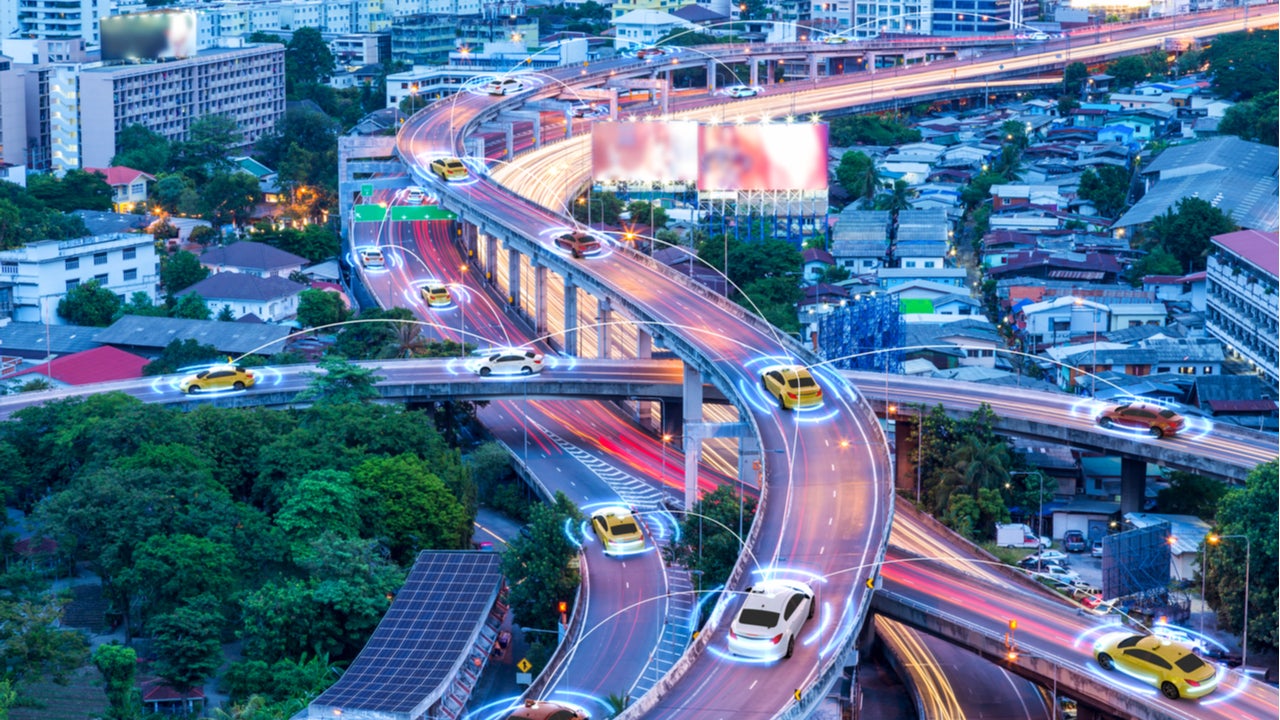The connected car is a result of the convergence of several ideas to use the evolving technology of network communications, known as the Internet of Things (IoT). The connected car’s role in the IoT is significant, since it brings together five key elements to the driver’s personal space and independent mobility: comfort, convenience, performance, safety and security.
Technology Trends
Listed below are the key technology trends impacting the connected car theme, as identified by GlobalData.
The introduction of 5G
The next iteration of mobile network will be far faster than the current 4G system. To put this into context, the first-generation cellular technologies of the 1980s were analogue and allowed voice only, while 2G in the Nineties introduced text and picture messages. Third-generation networks saw the introduction of mobile data and video calling and the higher data speeds of 4G allowed for video streaming.
But with an ever-growing number of devices available on the so-called IoT, a networking upgrade is greatly needed. 5G promises faster download speeds; lower latency, which is the delay in data transfer when a user initiates a command; and vastly superior capacity, meaning more devices can be connected to it at one time with little impact on the service experienced by other users.
A major advantage of the 5G network is that a non-standalone version will initially be built on top of the existing 4G infrastructure, meaning it can be deployed more quickly and efficiently than if the system were created from scratch. This will then be expanded in stages, including as a standalone variant, over the coming years.
Vehicle-to-infrastructure (V2I) connectivity
For car makers, often premium, which integrate eSIM cards, vehicle-to-infrastructure services is becoming a very real possibility within the next two years. Though progress has slowed, following the coronavirus pandemic, such technologies have already been showcased at well-regarded tech shows, CES and Mobile World Congress.
How well do you really know your competitors?
Access the most comprehensive Company Profiles on the market, powered by GlobalData. Save hours of research. Gain competitive edge.

Thank you!
Your download email will arrive shortly
Not ready to buy yet? Download a free sample
We are confident about the unique quality of our Company Profiles. However, we want you to make the most beneficial decision for your business, so we offer a free sample that you can download by submitting the below form
By GlobalDataDuring the Covid-19 lockdown restrictions, many commuters took to their connected cars as an alternative safe and quiet office space. Indeed, the pandemic proved to highlight just how effective a connected car could be and beckoned new respect for the lounge-like interiors of the concept cars in past motor shows.
eCall and beyond
There have been notable improvements in road safety and response times, following the 2017 introduction and ongoing expansion of the ‘eCall’ or automotive emergency response system (AERS), functionality that became officiated as part of an European Union (EU) initiative in 2013.
In the event of serious collision, the vehicle automatically connects to the emergency services, detailing the vehicle location. Some manufacturers have gone further, such as GM’s OnStar service, which like BMW, calls into the vehicle with a two-man team to check on participants and triage the status of the occupants to the emergency services.
Sharing economy
As the number of people learning to drive falls, so does the volume of private ownership. Generation Hashtag has established a nascent, but swiftly growing ridesharing economy, for which the growth in 5G connectivity will increase exponentially. The connected car is a key part of this shift in ownership, enabling riders to contact drivers and, eventually, vehicles, while on-the-go.
IoTConnected Vehicle Technologies will see the vehicle establish itself as a key component of the IoT and in doing so will bring benefits and challenges, both existing and previously unconceived, for both consumer mobility and business logistics.
Fleet logistics management
Fleet logistics will benefit exponentially from the developments of video telematics, where the use of cameras, combined with recorded driver behaviour will give fleet managers more visibility, leading to more productive staff, fewer absences due to work injury, more accountability and reduced costs.
The scalable cost of camera equipment has enabled telematics companies such as Exeros Technologies and Samsara, to create video-based telematics, using AI-based algorithms, which can assist fleet managers save on insurance costs through driver education, reductions in risk and loss of cargo and resources.
Pilot schemes and trials have identified patterns of driver behaviour, such as 12-hour shift models, which hinder, rather than help productivity. Overtired drivers have been shown to have more accidents and near-missed and be less efficient at the end of longer shifts.
Usage-based insurance
The insurance industry has benefitted from changes to data aggregation feeds that enable more visibility over both vehicle build information—and the inclusion of ADAS technologies, proven to reduce risk—and more personalised driver behaviour information. In being able to determine risk in a more customised way, insurers have been able to reduce fraud and offer less aggressive drivers better deals.
Reducing vehicle theft potential and the time taken to process an insurance claim are two other key benefits of using telematics in both fleet and consumer settings.
Market consolidation
For a number of years, the telematics industry has been a myriad of niche, innovative players and traditional suppliers, shifting into the tech and data worlds. Notable acquisitions, such as the Fleetmatics and Verizon deal, are demonstrating a shift where smaller players are being overshadowed by the double-digit growth of most established companies. This places them in a position to partner or sell-out, helping consolidate the market for OEMs—which, it should be noted, are themselves developing in-house solutions to protect data ownership.
This is an edited extract from the Connected Car – Thematic Research report produced by GlobalData Thematic Research.









Related Company Profiles
Samsara Inc.